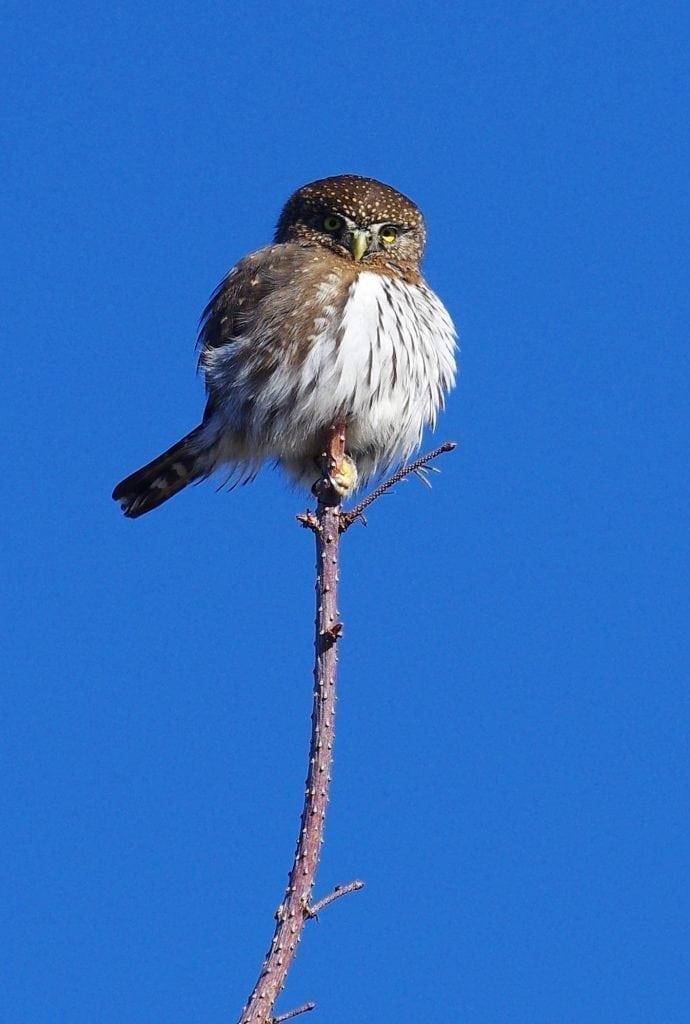Did it seem like your mother had eyes in the back of her head?
Pygmy Owl chicks may think the same of their mother too.
On a sunny, but cold February morning, the ground in the open on Mt. Hebo was bare while frost and a sprinkling of snow persisted in shady patches. The summit had been cold enough that ice columns up to two inches tall formed in the shallow soil.
On the western edge of the opening (where the Air Force Radar Base was razed), a Northern Pygmy Owl was perched on the tip of a spindly 25-foot Douglas Fir. It was sitting in full sun, but in the morning chill it had puffed up like a tennis ball with a silly little tail.
Northern Pygmy Owls are the smallest owls found in Oregon, and are quite common in suitable forests statewide. They are cavity nesters, so they need some trees old enough to have woodpecker holes. Although they need these older, larger trees to nest, they commonly hunt on forest edges and in young plantations. They also are more diurnal than most of our owls and can be found out and about well after sunrise.
Pygmy owls have large black marks on their napes, outlined in white, that look remarkably like eyes. The function of the pseudo-eyes was debated by ornithologists for years, but consensus now is they function to protect the owl from diurnal raptors. The idea is that a hunting hawk or falcon is less likely waste energy to attack a bird that it “knows” sees it. The element of surprise appears to be lost for the predator.
Eyespots are actually found in a lot of organisms, including a variety of moths, caterpillars, and numerous shallow-water fish.
Among large moths, a common pattern is to have large and elaborate eyespots on the underwings. Normally while resting these eyespots are hidden beneath the cryptic upperwings, but when a small bird or other predator begins to investigate the moth, it will raise the upper wings and expose the spots. These look a lot like owl eyes, and the wide spacing and position can make the whole moth resemble the face of a small owl.
To visit Mount Hebo (and have a chance to spot a Pygmy Owl youself), turn off Hwy 101 in the town of Hebo onto Route 22, for one quarter mile, then left on Mount Hebo road: a two-lane paved Forest Service road. The top is about eight miles and 3,000 feet above the turnoff.
